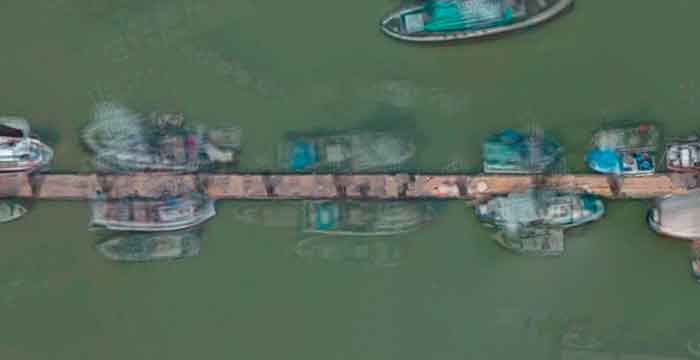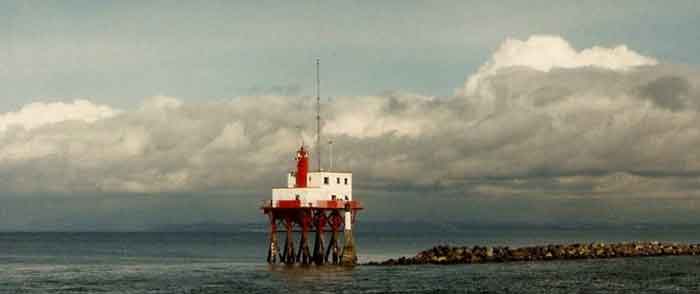Never give up. Always remember this. For the past few days, I have been combing back through the blog in the attempt to complete posts left undone, or incomplete, due to the press of events. In some cases the entire intent of the post is messed up by the fact of my error or omission. Letting Go is one of those posts.

The original intent had been to include an anecdote from my period of service in marine search and rescue. CCGC Rider was alongside in Steveston, it was close to 2300, the skipper had gone to bed, and I was alone in the wheelhouse on radio watch. Sand Heads light came on the air with the keeper reporting a small skiff overturned and men in the water.

I called for engines and went down to wake the skipper. We were only three miles from the incident site and well placed to respond. By the time we arrived on scene the men in the water had vanished in the dark, carried out to the vast waters of the strait by the immense flood of water gushing from the mouth of the Fraser. All of the night was spent running track searches with hovercraft CCG 021 operating to port and a fisheries vessel and a pilot boat on station to starboard. Illumination was delivered by a Buffalo flying from Comox. The aircrew dropped an endless string of magnesium parachute flares which lit up the water’s surface and painted it with chrome. The bright water revealed no survivor.
The report was of three persons in the water. Close to noon of the following day, we recovered a man from the water close in to Cabbage and Tumbo Islands, a set of uninhibited islets east northeast of Mayne Island. The current had carried the man thirty or forty miles through the night. The survivor was hypothermic but otherwise fine. He reported that one of the trio disappeared shortly after the capsize. He, and his buddy, were left clinging to seat cushions until some time late in the night when his friend complained he could no longer hold on. The survivor protested. Argued for his friend to maintain his grip. It made no difference. His companion let go and immediately slid below the brilliant waters.
This, and similar events, have remained with me thorough the years. The decision to let go, to give up, is frequently fatal. And if not fatal, it typically involves an adverse outcome. The selection process for most of the worlds military special forces typically focuses on the identification and recruitment of only those persons who will never give up, regardless of the enormity of the challenge. The scope of the problem faced is irrelevant. Their mental outlook is that they will prevail regardless of the situation and the odds set against them. They remain fundamentally indifferent to the possibility of failure. Failure does not present itself as an option. They either accomplish their goal, or they perish in the attempt. There is no middle ground. A team that shares that mindset is near unstoppable.
My recent problems involved a decision to give up. To let go. I have been seeking to unpack the reason for this change. I believe it derives from the adoption of a more realistic appreciation of my injury, of becoming more accepting of my faults, and cognitive deficits. I am learning to live with a brain injury rather than continually fighting to overcome and defeat it. I am not sure this acceptance is a positive behaviour. I feel unable to achieve the perspective required to properly evaluate the decision. In one sense, the decision has already been made.
The past week has been devoted to avoiding further TAQ submissions, avoidance of the blog, avoidance of any writing at all. In place of these activities, I have found small pleasures in attending to household details. The week has been one of shirt washing, cleaning, paper sorting, garbage removal, more cleaning. A thousand and one small items of make and mend. There is much to do. This activity satisfies my bias toward perseveration. I am happy and comfortable pursing these endless minor tasks, glad of the opportunity to turn my back on the insurance claim, on the litigation, on the enormous effort required to manage the research initiative, or the drafting of legal submissions.
But, in making this transition from one mode of activity to another, I have a sense of giving up, of being too accepting of my sitting in a corner, drooling, playing endlessly with my crayons. It is not as bad as I paint it but that is a pastiche of my sense of the contrast between the two behaviour modes. One mode calls for a continuation of the five year fight with the insurer until I prevail, or I perish. The other mode demands a simplicity of outlook, and an accommodation and acceptance of my present situation. To hell with the insurer, with the litigation, with the ongoing battle. I want little more than to putter within the house and once more make it shine.
